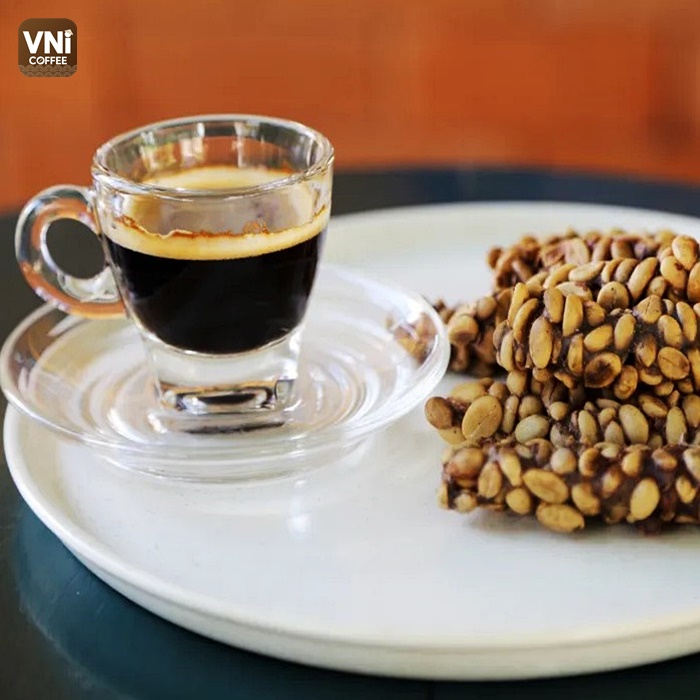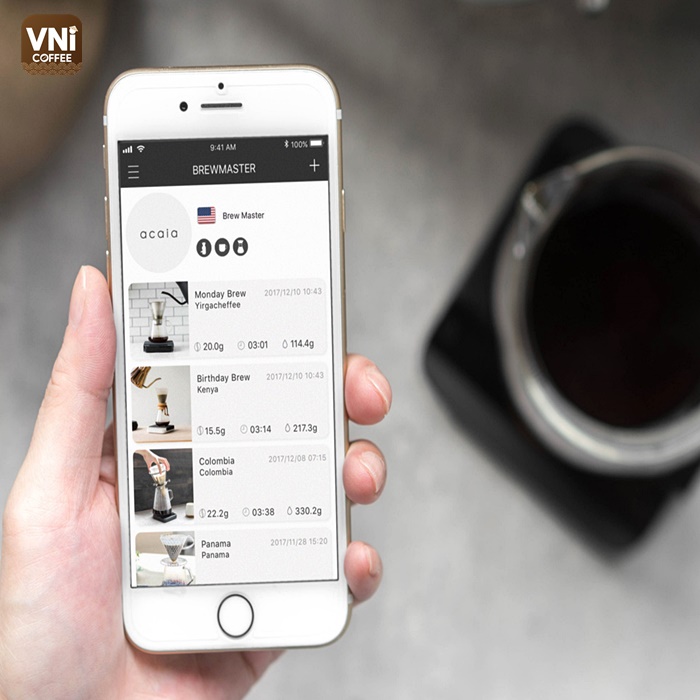
Siphon Coffee Brewing: Differences between Japanese vs. American styles
Along with watching the coffee slowly drop to the glass jar below and enjoying the freshly-extracted delicate flavor, Siphon goes beyond the need of simply making a clean cup of joe but becomes an artful experiment. In Japan, Siphon coffee brewing is brought to a high level of art with creativity in mixing and measuring ingredients. Americans have also been so fascinated with the Siphon gadget that they even created their own brewing to suit the tastes. Let’s get to know the two styles of Siphon coffee brewing from Japan and America in the article below.
How Siphon Coffee Brewing works
A siphon brewer contains 5 main parts:
- Upper chamber (or flask) for coffee grounds
- Filter
- Gasket seal
- A tube connecting the two containers
- A chain
- Lower chamber for water (with a tube connecting the two containers)
- Heat source
The principle for the operation has remained unchanged since its inception: Heat generated by a flame placed under the lower pot creates an increase in pressure, forcing the water to rise to the upper pot, where it soaks into the coffee for a certain amount of time. Once the flame is extinguished, the coffee will drop to a lower pot thanks to its cooling drop. While doing so, it passes through a filter that retains the coffee grounds in the upper flask.
It may take a few seconds for the top to fill with water. Once full, add the coffee to the water, then use a bamboo spoon or stick to stir well and start the timer.
Brewing coffee with a Siphon is an experience that extends from sight to hearing and finally to taste. Every preparation requires siphonista to be attentive as this method uses a direct heat source, so the temperature is extremely hot. In turn, you will learn a lot when working with this tool; it is not only about adding water, coffee, and boiling afterward but also measuring the amount of water, coffee, processing time, and osmosis time.
What you need to make good Siphon coffee
The first thing to have is the siphon brewer, you can find a mini glass siphon for home use at about $70. The beautifully-designed siphon will let you enjoy a delicious coffee while admiring the attractively quirky brewing method.
Next, to have a fragrant cup of java, quality coffee beans are a key factor. The coffee should be roasted at a medium to a medium-dark level so that its rich aromas and flavors are spread to the fullest. For ultimate freshness, grind the beans right at the time of making siphon coffee. The amount of coffee for one serving ranges from 20 to 30 grams.
Thirdly, you need to keep in mind the brew ratio that suits your taste. The most popular siphon coffee ratio levels are 1: 10, 1:12, and 1:15.
Finally, make sure you get all the basic steps in the Siphon brewing method. Take note of each step, from how to put the coffee in two glass pots, add 240 – 300ml of quality hot water, timing the butane burner, and most importantly, stirring the siphon coffee with a medium bamboo spoon so as not to lose the delicate taste.
**The basic siphon brewing method:
- Step 1: Soak the filter in boiling water for 3-5 minutes, then put it neatly into the funnel.
- Step 2: Pour 300ml of boiling water into the spherical jar below.
- Step 3: Put about 45gr of finely-ground coffee into the hopper.
- Step 4: Carefully insert the funnel into the spherical jar, then place the stove on the bottom, or use a halogen heater.
- Step 5: At the beginning of the boiling process, the water evaporates into steam that will osmosis in the coffee in the funnel.
- Step 6: When the water has completely evaporated, continue to leave it on the stove for 10 seconds. Use a bamboo spoon to stir it, then turn off the stove and wait for the coffee to drip into the pot.
Both American and Japanese styles apply those steps above, however, to suit the tastes of each culture, they have modified several steps to create their own siphon brewing method. Here are two specific styles:
American-style Siphon brewing
- Step 1. Soak the filter in warm water for 5 minutes. Drop the filter in the center of the upper flask, then pull the chain to secure the filter and place the upper flask on the holder.
- Step 2. Weigh the coffee. The amount depends on the brew ratio you want. Grind coffee at medium coarseness, slightly finer than French Press.
- Step 3. Pour hot water into the lower bowl on its stand.
- Step 4. Turn on the burner. Place the lower pot over the fire and wait for the water to rise to the top pot. Use a thermometer to measure the water’s temperature in the upper flask and adjust the flame until it stabilizes at 188°F (87°C).
- Step 5. Put ground coffee into the upper pot. Gently combine the ground coffee into the top layer of hot water by slowly and evenly rubbing the stirrer along the top of the coffee block for no more than 30 seconds. Within 30 seconds, all the coffee will be moistened with hot water.
- Step 6. Let the coffee brew for 20 to 40 seconds.
- Step 7. Stir the coffee with the stirrer for no more than 12 turns to create the fastest and deepest whirlpool with the minimum number of spins.
- Step 8. Separate the siphon from the heat source. The coffee will drain into the lower bowl after 30 to 45 seconds.
Japanese-style Siphon brewing
They will heat the siphon pots before brewing to let them get used to the heat, keeping the good coffee flavor after making.
- Step 1. Soak the filter in warm water for 5 minutes. Drop the filter in the center of the upper jar, then pull the chain to secure the filter and place the top on the support.
- Step 2. Weigh the coffee. The amount depends on the brew ratio you use. Grind coffee to medium coarseness, slightly finer than French Press. Transfer the ground coffee to the top of the siphon.
- Step 3. Pour hot water into the lower pot on its holder.
- Step 4. Ignite the burner. Place the lower pot over the fire and wait for the water to boil. Test the temperature of the water by placing the top flask so that the chain is in contact with the water. You will see the reaction (bubbles), but if the reaction is too intense, remove the lower flask from the heat and rotate it counterclockwise to release the foam.
- Step 5. When the lower flask overheats, insert the upper part firmly but gently, as you will soon have to remove the top.
- Step 6. When the water has risen about 2.5cm to the upper pot, use the bamboo stick to mix the coffee into the water.
- Step 7. Hold the siphon for 30 seconds, then start stirring counterclockwise, with the burner still on. Stir no more than 12 turns to create the fastest and deepest whirlpool with the minimum number of spins.
- Step 8. Separate the siphon from the heat source. The coffee will drain into the lower pot after 30 to 90 seconds.
- Step 9. To remove the top, shake it gently back and forth as you twist and pull it out of the bottom jar. Taking a wet towel to decrease the heat of the lower pot helps the coffee reduce the process of continuing chemical reactions.
As we could notice, the main difference here is how they measure the temperature and the stirring tool. While Americans use a thermometer and a stirrer, Japanese, in contrast, do it by observing the bubbles appear on the chain connecting the two bowls when the water is hot enough. When the water has risen about 2.5cm to the upper pot, they gently poke the coffee into the water until it is soaked with a bamboo stick – as they believe, bamboo won’t change the original taste of coffee. After keeping the siphon for 30 seconds, they start to stir in a fast and deep whirlpool.






